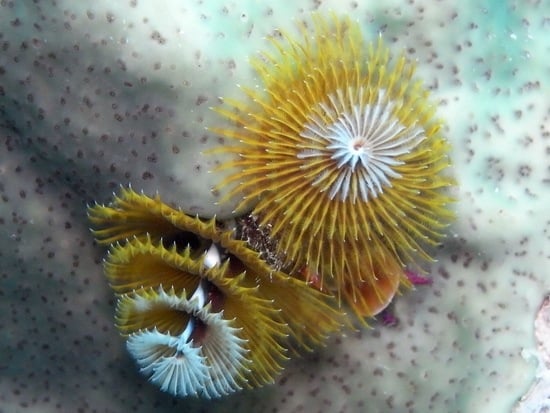Extension of the Recorded Host Range of Caribbean Christmas Tree Worms (Spirobranchus spp.) with Two Scleractinians, a Zoantharian, and an Ascidian
Author Contributions
Funding
Acknowledgments
Conflicts of Interest
References
- Hoeksema, B.W.; ten Hove, H.A. The invasive sun coral Tubastraea coccinea hosting a native Christmas tree worm at Curaçao, Dutch Caribbean. Mar. Biodivers. 2017, 47, 59–65. [Google Scholar] [CrossRef]
- Hoeksema, B.W.; van Beusekom, M.; ten Hove, H.A.; Ivanenko, V.N.; van der Meij, S.E.T.; van Moorsel, G.W.N.M. Helioseris cucullata as a host coral at St. Eustatius, Dutch Caribbean. Mar. Biodivers. 2017, 47, 71–78. [Google Scholar] [CrossRef]
- Martin, D.; Britayev, T.A. Symbiotic polychaetes revisited: An update of the known species and relationships (1998–2017). Oceanogr. Mar. Biol. Ann. Rev. 2018, 56, 371–448. [Google Scholar]
- Hoeksema, B.W.; Wels, D.; van der Schoot, R.J.; ten Hove, H.A. Coral injuries caused by Spirobranchus opercula with and without epibiotic turf algae at Curaçao. Mar. Biol. 2019, 166, 60. [Google Scholar] [CrossRef]
- Hoeksema, B.W.; ten Hove, H.A. Attack on a Christmas tree worm by a Caribbean sharpnose pufferfish at St. Eustatius, Dutch Caribbean. Bull. Mar. Sci. 2017, 93, 1023–1024. [Google Scholar] [CrossRef]
- Nishi, E.; Nishihira, M. Age-estimation of the Christmas tree worm Spirobranchus giganteus (Polychaeta, Serpulidae) living buried in the coral skeleton from the coral-growth band of the host coral. Fish. Sci. 1996, 62, 400–403. [Google Scholar] [CrossRef]
- Hoeksema, B.W.; Lau, Y.W.; ten Hove, H.A. Octocorals as secondary hosts for Christmas tree worms off Curaçao. Bull. Mar. Sci. 2015, 91, 489–490. [Google Scholar] [CrossRef]
- García-Hernández, J.E.; Hoeksema, B.W. Sponges as secondary hosts for Christmas tree worms at Curaçao. Coral Reefs 2017, 36, 1243. [Google Scholar] [CrossRef]
- Suchanek, T.H.; Green, D.J. Interspecific competition between Palythoa caribaeorum and other sessile invertebrates on St. Croix reefs, US Virgin Islands. Proc. 4th Int. Coral Reef Symp. 1981, 2, 679–684. [Google Scholar]
- Bak, R.P.M.; Sybesma, J.; van Duyl, F.C. The ecology of the tropical compound ascidian Trididemnum solidum. II. Abundance, growth and survival. Mar. Ecol. Prog. Ser. 1981, 6, 43–52. [Google Scholar] [CrossRef]
- ten Hove, H.A. Serpulinae (Polychaeta) from the Caribbean: I–The genus Spirobranchus. Stud. Fauna Curaçao Caribb. Is. 1970, 32, 1–57. [Google Scholar]
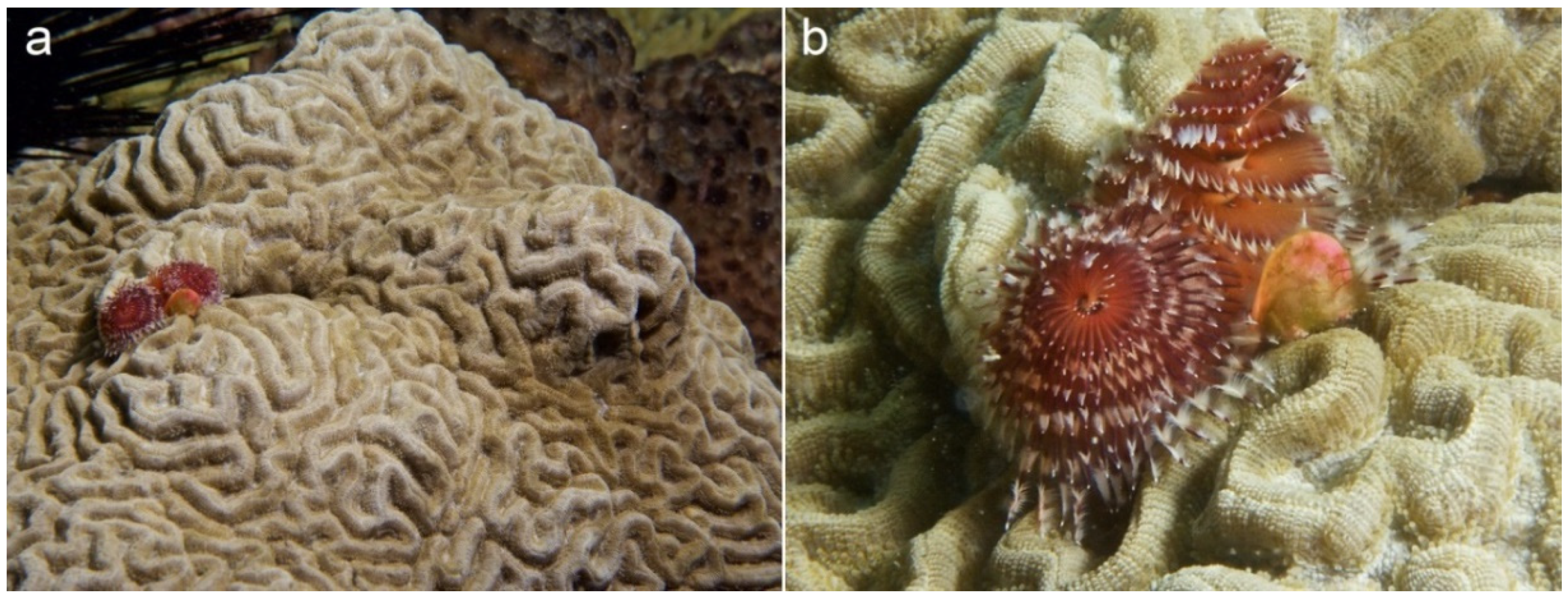
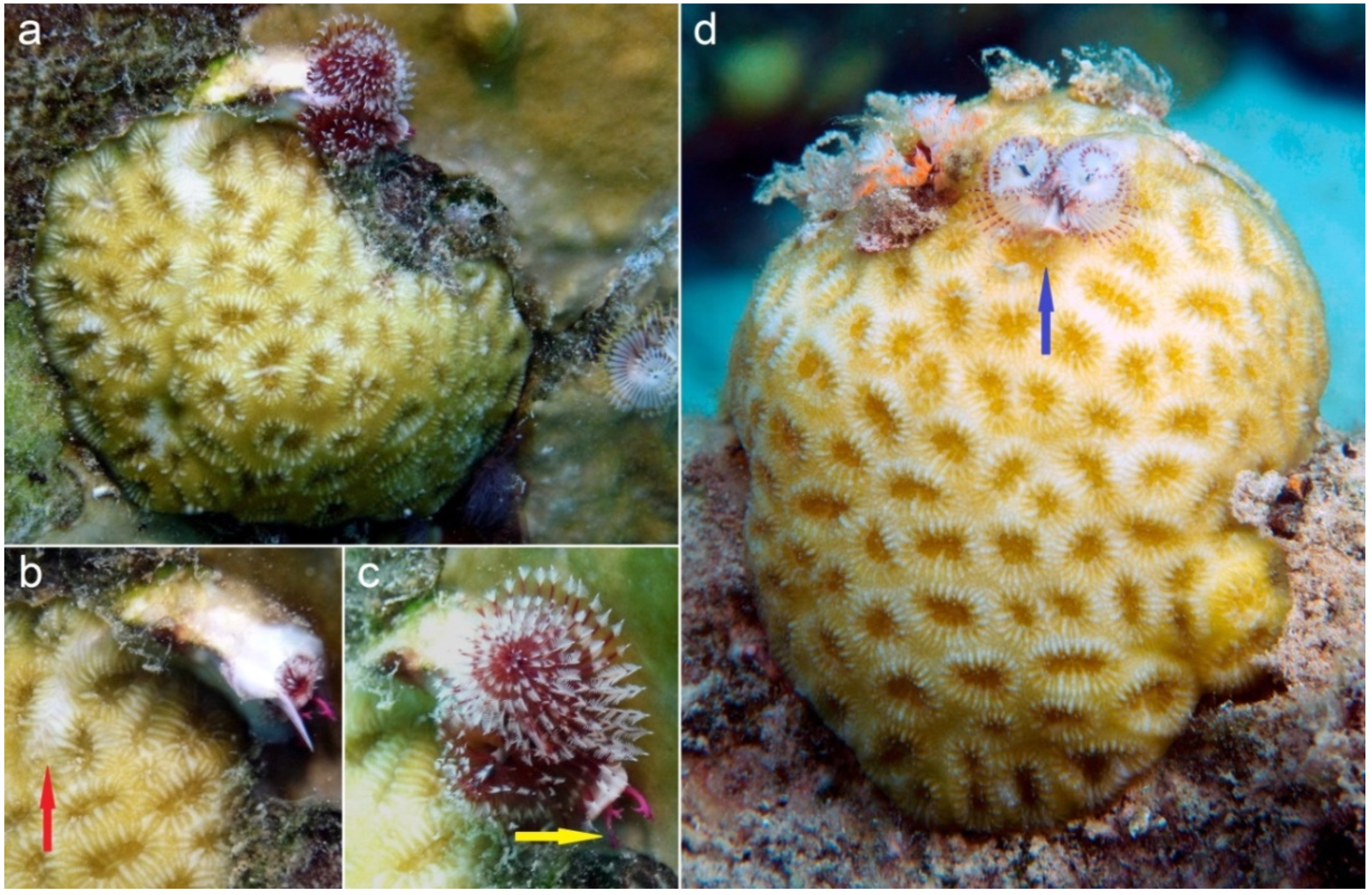
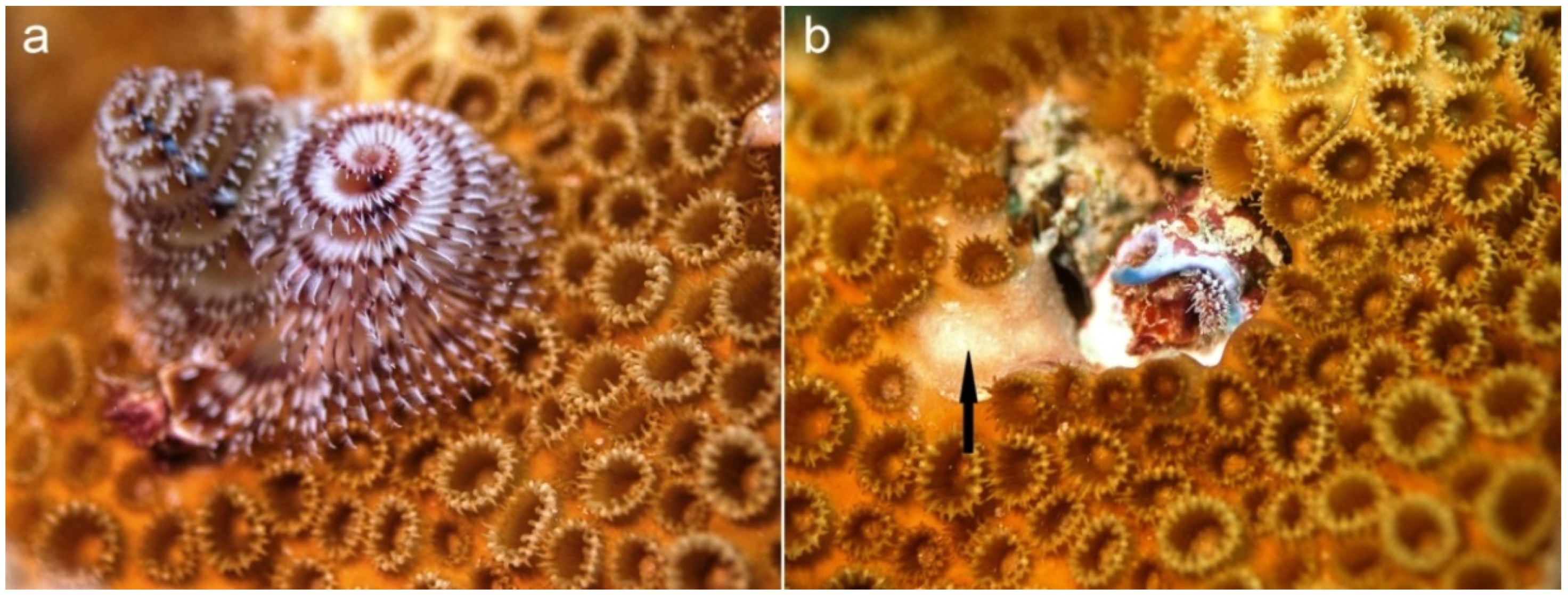
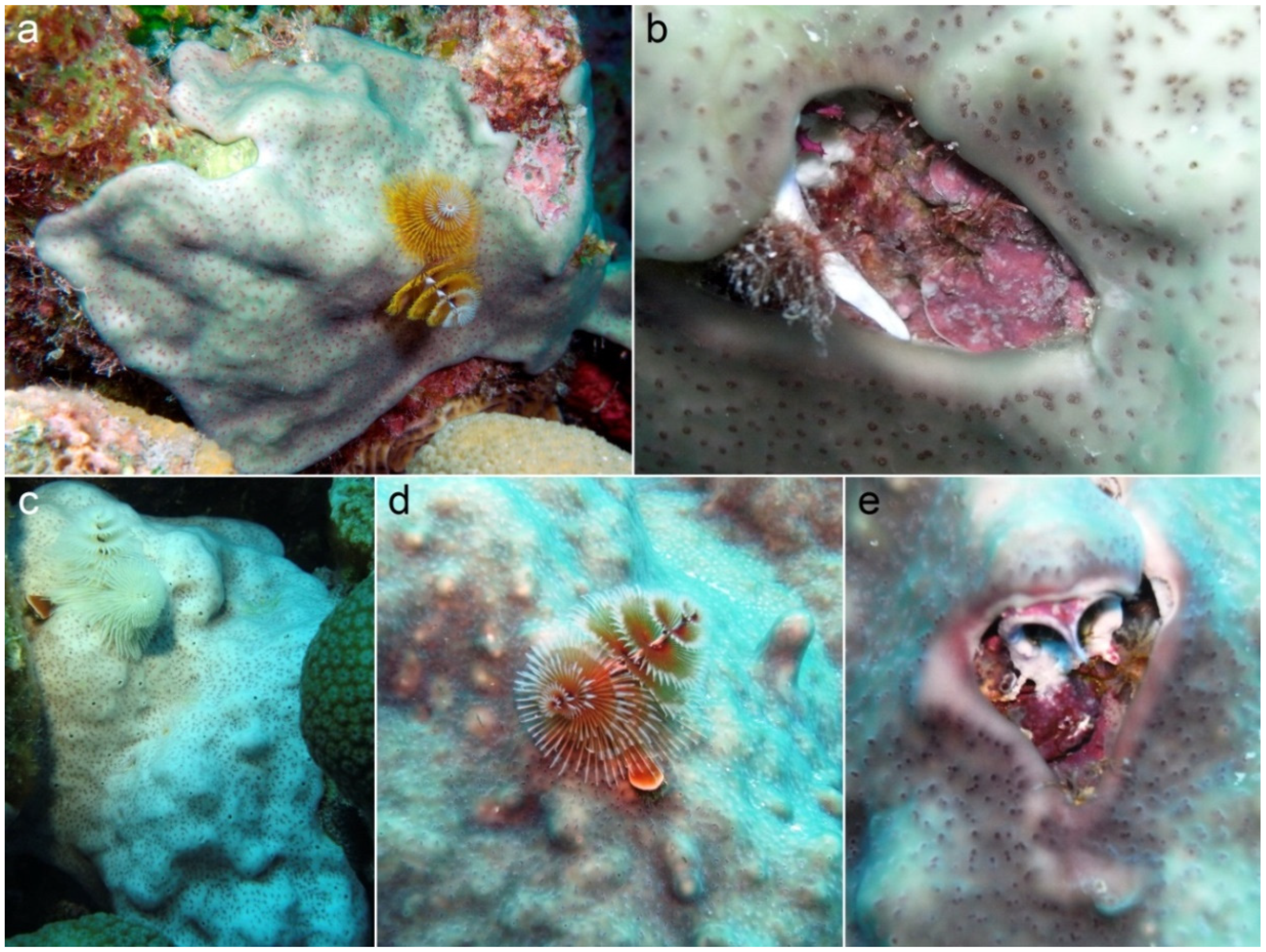
© 2020 by the authors. Licensee MDPI, Basel, Switzerland. This article is an open access article distributed under the terms and conditions of the Creative Commons Attribution (CC BY) license (http://creativecommons.org/licenses/by/4.0/).
Share and Cite
Hoeksema, B.W.; García-Hernández, J.E.; van Moorsel, G.W.N.M.; Olthof, G.; ten Hove, H.A. Extension of the Recorded Host Range of Caribbean Christmas Tree Worms (Spirobranchus spp.) with Two Scleractinians, a Zoantharian, and an Ascidian. Diversity 2020, 12, 115. https://doi.org/10.3390/d12030115
Hoeksema BW, García-Hernández JE, van Moorsel GWNM, Olthof G, ten Hove HA. Extension of the Recorded Host Range of Caribbean Christmas Tree Worms (Spirobranchus spp.) with Two Scleractinians, a Zoantharian, and an Ascidian. Diversity. 2020; 12(3):115. https://doi.org/10.3390/d12030115
Chicago/Turabian StyleHoeksema, Bert W., Jaaziel E. García-Hernández, Godfried W.N.M. van Moorsel, Gabriël Olthof, and Harry A. ten Hove. 2020. "Extension of the Recorded Host Range of Caribbean Christmas Tree Worms (Spirobranchus spp.) with Two Scleractinians, a Zoantharian, and an Ascidian" Diversity 12, no. 3: 115. https://doi.org/10.3390/d12030115
APA StyleHoeksema, B. W., García-Hernández, J. E., van Moorsel, G. W. N. M., Olthof, G., & ten Hove, H. A. (2020). Extension of the Recorded Host Range of Caribbean Christmas Tree Worms (Spirobranchus spp.) with Two Scleractinians, a Zoantharian, and an Ascidian. Diversity, 12(3), 115. https://doi.org/10.3390/d12030115






